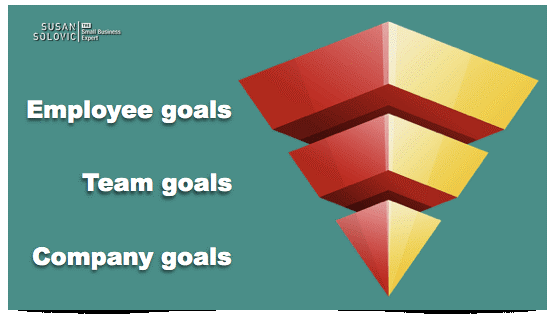How to Set Goals for Your Employees That Lead to Success
By: Susan Solovic

I was talking to a young professional the other day and he mentioned that he was signing up for an online course. He explained that it was one of the goals he and his boss agreed on during their last performance review session.
The course he was going to take would benefit his work to some degree, but more than that, it was an area he was interested in and the course would broaden his professional skills. I was impressed that his boss included that type of direction, investment, and encouragement in a yearly performance review.
In business, whenever we describe someone as being “goal oriented” it’s a good thing, and if we allow it, that fact can do a lot to push our organizations toward greater success. We must, however, approach goal setting wisely.
Goals and priorities are closely related and we all know that you can’t have more than one “first priority.” Therefore, priorities and goals should be limited in number. Generally speaking, it’s wise to start with company goals and then work your way to employee goals. Picture an inverted pyramid with a base of a few company goals, a middle layer of more team goals, and then the biggest top layer of individual employee goals.
You may know the SMART guidelines for setting goals. They should be Specific, Measurable, Achievable, Relevant, and Time-bounded. These apply to goals at all levels: company, teams, and employees. Company and team goals generally relate directly to the mission of your organization. However, some employee goals can go in different directions.
Business has been stuck with the label “Yearly Performance Review” for generations and I think it’s very outdated. I suggest taking a more holistic approach to employee reviews and conducting them more frequently. Consider professional and personal growth. Find out areas of interest that are undeveloped and give employees the chance to explore them.
Let your team members know that you are invested in their personal and professional growth and not merely in meeting some departmental or job-specific performance improvements. This will lead to far greater loyalty to your business and far less employee turnover.
We often say that it’s much less expensive to retain a customer than acquire a new customer. The same principle applies to employees.













